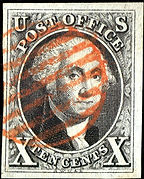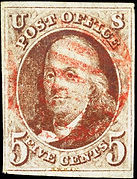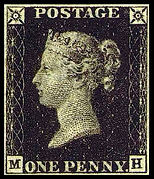
CYPHER STAMP CLUB
Colorado Young Philatelic Explorers and Researchers
Sponsored by the Rocky Mountain Philatelic Library
2038 S. Pontiac Way, Denver, CO 80224




POSTAL HISTORY
There are many different areas of stamp collecting. One interesting specialty is the collecting of postal history (letters, envelopes, postcards, and postmarks).
A stamp collector is sometimes referred to as “a student of science,” as the collector learns about the paper types, printing methods, inks, watermarks, and perforations. A postal history collector is sometimes referred to as “a student of humanity,” as the collector learns about the means of transport, the cost of mailing, the routes and methods used to deliver the mail, and the markings on the mail.
Some areas of postal history include:
-
Aerophilately (Mail delivery by airplane)
-
Rocket Mail (Mail delivery by rocket)
-
Railway Mail (Mail delivery by railroad)
-
Military Mail (Mail delivery by the Army, Navy, Air Force, Marines, during war time)
-
Postal Stationary (Envelopes, Postcards, Lettercards, Wrappers, etc.)
-
Auxiliary Markings (Special markings indicating Postage Due, Forwarded, Returned, and more)
THE FIRST POST OFFICE IN COLONIAL AMERICA
The population of Boston, Massachusetts, numbered about 1,200 people before the first Colonial Post Office was established in 1639. There was no organized postal system and communicating with family and friends across the ocean was difficult and expensive. Mail was left at a local tavern or inn, it waited there for a traveler to take it overseas. Letters arriving from overseas were dropped off at a tavern, they sat there until someone picked them up.
Richard Fairbanks, born in England in 1588, was married to Elizabeth Daulton. They immigrated to American in 1634 with their two children. Richard was a tavern owner and well-known citizen of Boston. Five years after his arrival, Richard Fairbanks' tavern became the location for Boston’s first Post Office.
On November 9, 1639, the General Court of Massachusetts designated his tavern as the official location where mail could be sent to or received from overseas. He collected a fee of 1d (one penny) for every letter he handled. He was responsible for all miscarriages due to his own neglect. Richard Fairbanks managed the Post Office in his tavern until his death in 1667.
Why was a tavern selected as the location for the first Post Office? Everyone was familiar with the tavern. People gathered there to eat, drink and rest while traveling. People heard news from travelers and learned what was happening in other parts of the world.
Fairbanks’ tavern handled mail going to or from overseas locations. People did not generally write to other colonies other than for business. People were more interested in sharing news with friends, family and business partners across the ocean. Sending personal letters overseas was very expensive and most outgoing mail was business or government related.
Mail between towns, cities or colonies was dropped off at a tavern. There the letter would sit until a traveler heading in that direction would take it and carry it to its destination. If a person could afford the expense, they could hire someone to carry their letter by land (on foot or horseback) or coastal ship. Sometimes a letter was carried by several different travelers before reaching its destination. The early colonial period was wild country. Travelers were often attacked by bandits, Indians, animals, or have an accident. There was no guarantee a letter would reach its final destination.
Map of Boston, 1635, red circle showing location of Fairbanks’ tavern.



